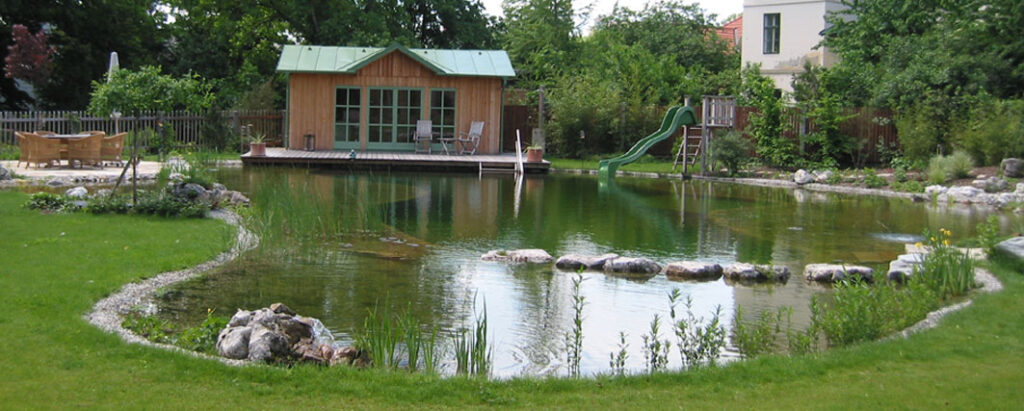Whether you like to practice your diving skills or lounge away the day on a raft, swimming is one of hot season’s perfect pleasures. With a minimum of materials and without an arsenal of chemicals, you can build an idyllic water oasis right in your own backyard.
If you ask most Kenyan contractors to build a backyard pool, they’ll roll out a long list of goods, including rebar, gunite, fiberglass, chlorine and an energy-sapping filtration system. But you can learn how to build a pool without relying on a mass of manufactured materials and chemical additives. You’ll find that it’s possible to construct pools that are more about building with nature and blending into the natural landscape. Natural swimming pools use gravel stone and clay in place of concrete or fiberglass, and aquatic plants instead of harmful chemicals and complicated mechanical filtering systems. The plants enrich the pool with oxygen, support beneficial bacteria that consume debris and potentially harmful organisms, and give habitat to frogs, dragonflies and other water life. The result is a beautiful, ecologically diverse system that is relatively inexpensive to construct. A natural pool can be constructed for as little as Ksh 20,000 if you do it yourself, while conventional pools can cost millions. Natural swimming pools require no harmful chemicals, are fairly low-tech, and once established call for only minimum management. You won’t have to drain the pool all the time. Except for topping it off now and then, you’ll fill the pool only once.
Dig It: Creating a Natural Swimming Pool by Hand
The cheapest and most ecologically sound way to build a swimming pool is simply to hollow a hole in the ground. You can make your pool as shallow or as deep as you want, but the key is to make sure the sides slope: Otherwise the soil will cave in. The ratio should be a 1-foot vertical drop for every 3 horizontal feet. One of the main reasons traditional swimming pools are constructed with a steel framework is to ensure the walls stay vertical and perpendicular to the bottom surface of the pool. Construct a pool with sloping sides and you’ll eliminate the need for any steel reinforcement.
Zoning Your Pool
Reserving at least 50 percent of your pool’s surface area for shallow plants, either at one end or in a ring around the sides, eliminates the need for chlorine and expensive filters and pumps. You’ll want to separate the swimming area of your pool and the filtration area, or plant zone . A rim within an inch of the water’s surface keeps plants in their place but allows water from the swimming area to move to the plant zone for filtering, As water passes through the fibrous root structure of the plants, bacteria concentrated on the plants’ roots act as a biological filter, removing contaminants and excess nutrients in the water. Decomposer organisms, also found in the plants’ root zones, consume the bacteria, effectively eliminating underwater waste buildup.
Inside the plant zone, the water should get steadily deeper, reaching a maximum depth of 18 inches near the swimming zone. The outermost 6 inches of the plant zone will be 2 to 3 inches deep, providing a home for taller aquatic plants. Submergent and floating vegetation occupy the deeper area.
.











